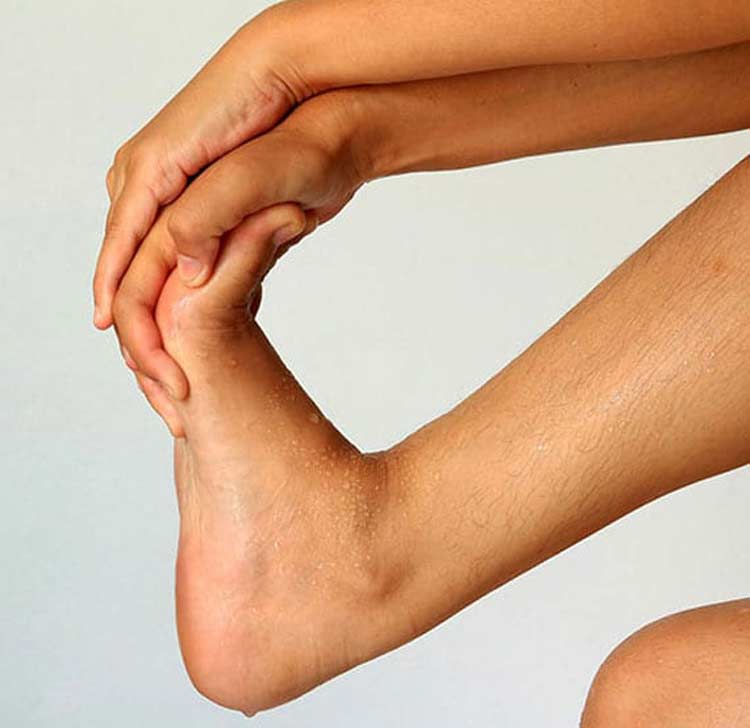
Discover how we can help you find relief from neuromas.
Foot pain is so common that eight out of 10 Americans report experiencing it, and some of them say the pain is consistent and regular. Neuromas account for some of that discomfort.
- A neuroma is a thickening of nerve tissues in parts of the body,
- It is common in the feet.
Morton’s Neuroma
A common type of neuroma is Morton’s neuroma. Also known as an intermetatarsal neuroma, the condition affects the ball of the foot, which is the part of the sole behind the toes. Bones in the ball of the foot connect through ligaments, and nerves run under these ligaments and between the bones. If one of these nerves gets caught, or pinched, between two bones or between a ligament and bone, it swells and becomes painful. The swollen nerve is the neuroma. Typically, it occurs between the third and fourth toes.
Neuroma Symptoms
- Pain between toes and in the forefoot
- Burning, tingling or numbness in the ball of the foot
- Swelling between toes
- Feeling that something is on the inside of the ball of the foot
- A sensation of something under the foot or in the shoe, such as a pebble or bunched up sock.


Symptoms typically come on gradually and may occur only occasionally. Massaging the foot or taking off the shoes may relieve the pain. Over time, symptoms get worse and may linger for days or weeks without relief. As the neuroma gets larger, symptoms intensify. The longer the condition persists, the more likely permanent nerve damage occurs.
Causes
While the exact cause of neuromas is unknown, anything compressing or irritating the nerve could contribute to the condition. This includes improper footwear, such as high heels. Shoes that are elevated over two inches, or those with a narrow toe box can squeeze toes together and add pressure to the forefoot area.
Another contributor to neuroma development is a biomechanical deformity, such as flat feet, high-arched feet, bunions and hammertoes. Deformities such as these cause instability near toe joints. Any type of trauma to the forefoot could lead to nerve damage, inflammation and swelling. Repeated stress, which is common in some occupations and activities are factors. High-impact activities, such as jogging, and those requiring tight shoes, such as rock climbing or snow skiing, increase the risk of neuroma development.
Diagnosis of Neuromas
Diagnosis is necessary to determine the severity of the neuroma, how long it has existed and which treatment offers the best options. During the exam, a podiatrist manually manipulates the foot to reproduce symptoms. Imaging tests may be used to rule out another issue, such as arthritis or a fracture. Early diagnosis is better because it lessens the chance of having to undergo more aggressive treatment, such as surgery.
Nonsurgical Treatment Options
Nonsurgical treatments work best for mild to moderate neuroma cases. One option is padding to increase metatarsal arch support, which lessens nerve pressure and decreases compression when walking. An ice pack placed over the neuroma helps reduce swelling. Contrast baths also work well for swelling. Patients soak the affected foot in warm water for 30 seconds, then soak it in cool water for 30 seconds. This is repeated for five minutes and is done three or four times per day.
Sometimes a podiatrist will recommend customized orthotic devices to add foot support and reduce nerve pressure and compression. Ibuprofen or another type of anti-inflammatory can reduce pain and swelling. Some patients get injection therapy, which includes a local anesthetic, cortisone or another medicine.
Patients may have to avoid activities that put pressure on the neuroma until the condition improves. Another recommendation is to wear shoes with lower heels and a wider toe box.
Podiatric Surgery
After nonsurgical treatments are attempted and fail to resolve the problem, surgery is the next step for those with mild or moderate neuromas. Those diagnosed with severe Morton’s neuroma may get a surgical recommendation after an initial exam. Surgeons choose a dorsal approach, which is to make an incision on top of the foot, or a plantar approach, which is making an incision on the ball of the foot.
Decompression surgery involves a surgeon cutting structures near the pinched nerve. The structure could be the ligament binding some of the bones near the forefoot. Another surgical option is to remove the swollen and enlarged nerve. Surgery is usually an outpatient procedure, and recovery time is only a few weeks long.

